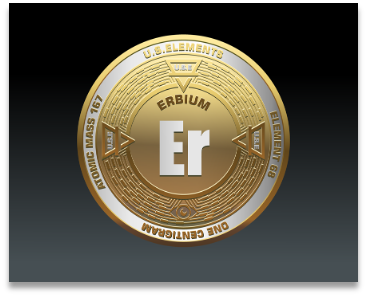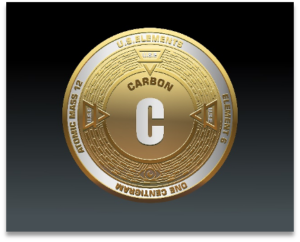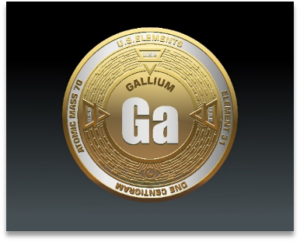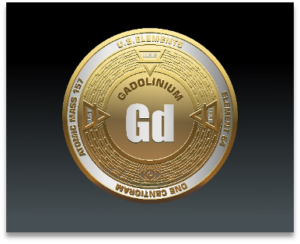When it comes to critical minerals, some elements steal the spotlight, while others quietly power some of the most essential modern technologies. In this twelfth installment of the Critical Minerals Series, we turn our attention to erbium—an element best known for its role in fiber optic communication and high-performance lasers. What makes erbium truly fascinating is its ability to amplify light, a property that has revolutionized global communications and medical technologies. Despite its essential applications, the U.S. remains heavily reliant on foreign sources for its supply, making it a key mineral in the push for domestic mineral independence.
Why the U.S. Needs Erbium
Erbium (Er), a member of the lanthanide series, is indispensable in fiber optic networks. It is used in erbium-doped fiber amplifiers (EDFAs), which boost signal strength in long-distance telecommunications, allowing data to travel efficiently across vast networks. Additionally, erbium finds applications in:
- Medical Lasers – Used in dermatology and dentistry due to its ability to precisely target and remove tissue while minimizing thermal damage.
- Nuclear Reactors – Erbium absorbs neutrons effectively, making it valuable as a control rod material in nuclear power plants.
- High-Performance Alloys – Enhances the strength and corrosion resistance of vanadium-based alloys used in aerospace applications.
Where It’s Found Domestically
Like many rare earth elements, erbium is not found in isolation but is extracted as part of mixed rare earth deposits. The most promising domestic sources include:
- Mountain Pass, California – One of the richest rare earth mines in the U.S., though focused on elements like neodymium and praseodymium, with potential for erbium extraction.
- Bear Lodge, Wyoming – A significant rare earth deposit with the potential for erbium recovery.
- Texas and Alaska Deposits – Additional sites with rare earth-bearing minerals that could contribute to erbium supply if processing capabilities improve.
Economic Realities
The global market for erbium is relatively small compared to other rare earth elements, but its demand is stable and expected to grow with increasing reliance on fiber optic infrastructure. China dominates the global supply chain, accounting for over 80% of rare earth production, including erbium. This creates a significant supply risk for U.S. manufacturers and technology companies.
Processing and Technological Innovations
Erbium extraction is complex and typically requires separation from other rare earth elements through solvent extraction or ion-exchange processes. Advances in rare earth refining technology could make domestic processing more viable. Researchers are also exploring new methods of rare earth element recovery from coal ash and electronic waste, which could become an alternative supply source.
Abundance and Waste Recovery Potential
Erbium is found at an average crustal abundance of about 3.5 parts per million (ppm), making it more common than elements like gold but challenging to extract in high concentrations. Waste recovery initiatives, including recycling from discarded electronics and industrial byproducts, may provide a sustainable secondary supply.
Time to Market
The extraction and refinement of erbium can take several years due to permitting, infrastructure development, and the technical challenges associated with rare earth separation. Investments in processing facilities within the U.S. could shorten this timeline in the future.
Current and Future Applications
Beyond its current uses in telecommunications, medicine, and nuclear energy, future research could unlock new applications for erbium, such as:
- Quantum Computing – Erbium’s unique optical properties make it a candidate for quantum communication networks.
- Next-Generation Displays – Potential use in high-efficiency phosphors for advanced display technologies.
Impact on Everyday Life
Though few people realize it, erbium plays a vital role in everyday activities. Every time you stream a video, make a phone call, or use high-speed internet, erbium-enhanced fiber optics are at work, ensuring smooth and reliable data transmission.
Consequences of Supply Shortages
A disruption in the erbium supply chain could lead to higher costs and slower advancements in communication and medical technology. The reliance on China for erbium and other rare earth elements makes the U.S. vulnerable to geopolitical tensions and trade restrictions.
Import Dependence
The U.S. currently imports nearly all of its erbium, with China being the primary supplier. Without domestic production or alternative sources, the U.S. remains at significant risk of supply disruptions.
Securing America’s Future
To reduce dependence on foreign sources, the U.S. must invest in rare earth mining, refining, and recycling initiatives. Strengthening domestic supply chains will ensure that erbium remains available for the industries that rely on it, from telecommunications to cutting-edge medical treatments.
As we continue this Critical Minerals Series, we uncover the hidden importance of elements like erbium and their essential roles in modern technology. Stay tuned for our next article, where we explore another key mineral vital to America’s future.






